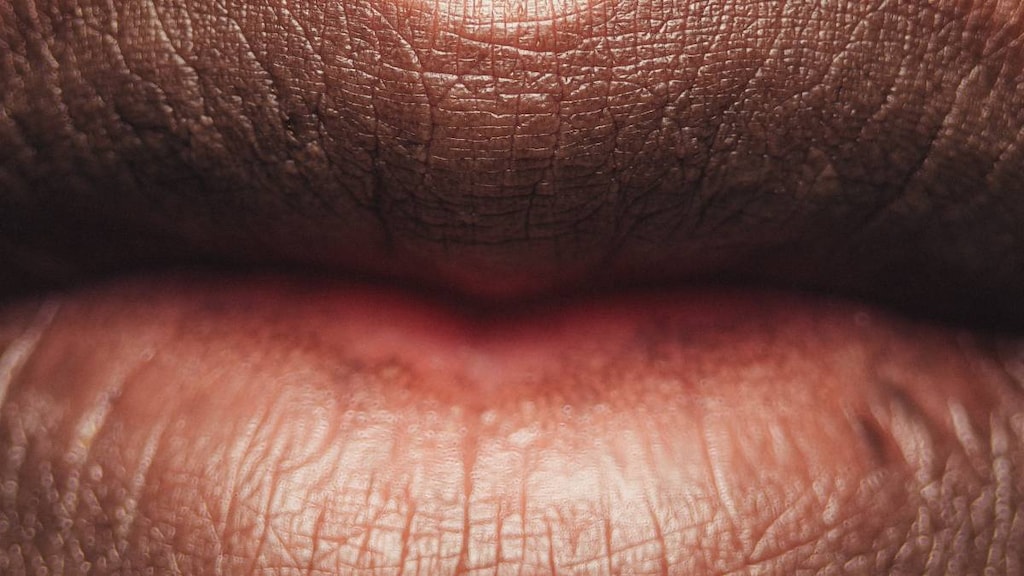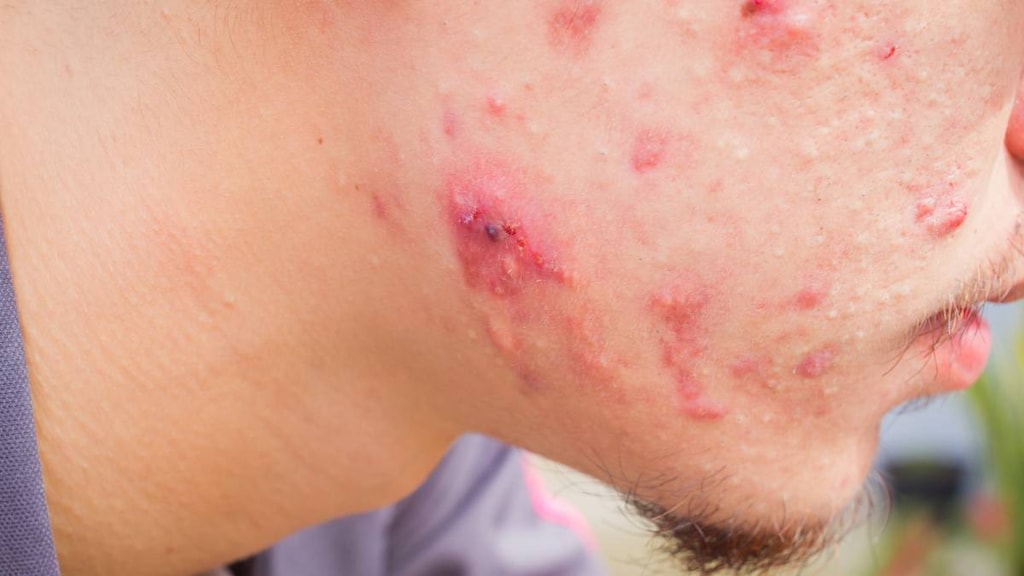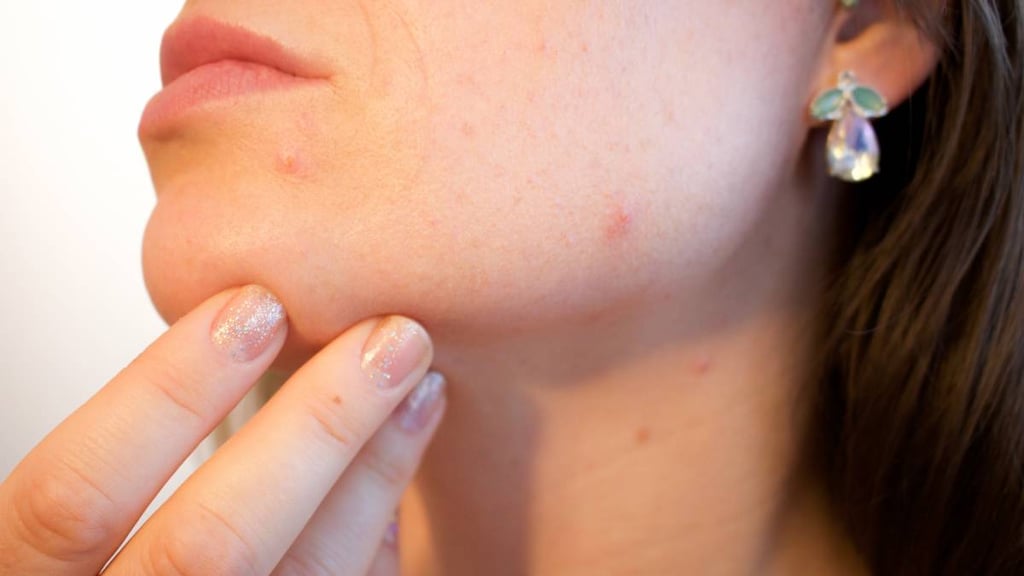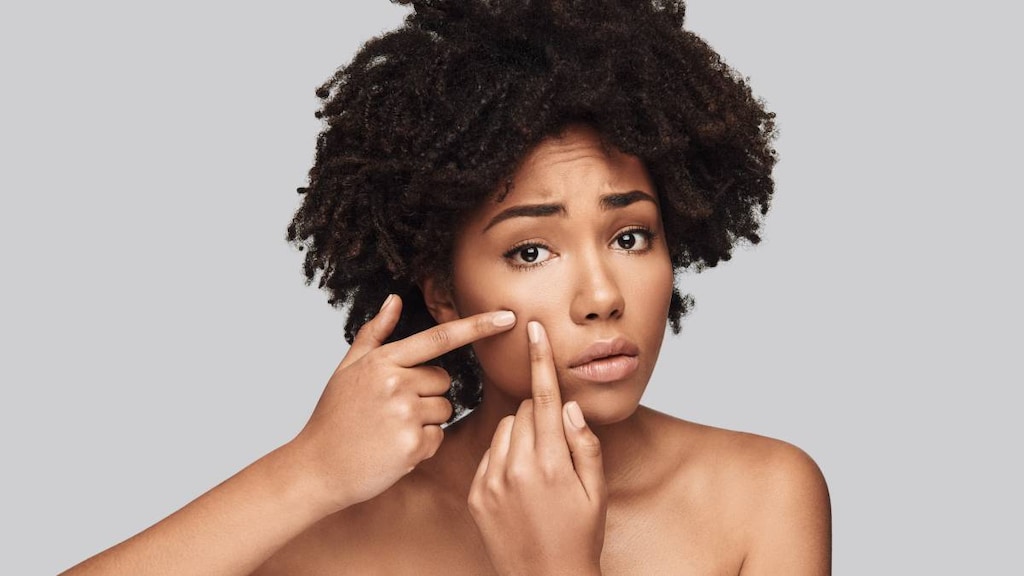Dosage Forms
Excipient information presented when available (limited, particularly for generics); consult specific product labeling. [DSC] = Discontinued product
Cream, External:
CeraVe Psoriasis: 2% (227 g) [contains cetearyl alcohol, cetyl alcohol, disodium edta]
Salacyn: 6% (400 g [DSC]) [contains cetyl alcohol, disodium edta, methylparaben, propylparaben, trolamine (triethanolamine)]
Salimez: 6% (227 g)
Salimez Forte: 10% (227 g)
Generic: 6% (400 g, 454 g)
Foam, External:
SalAc: 2% (100 g) [contains alcohol, usp]
Salvax: 6% (70 g, 200 g) [contains ethylparaben, methylparaben, polysorbate 80, propylene glycol, propylparaben, trolamine (triethanolamine)]
Generic: 6% (70 g, 200 g)
Gel, External:
Exuviance Blemish Treatment: 2% (15 g [DSC]) [contains denatured alcohol, peanut oil, propylene glycol]
Keralyt: 3% (28.4 g) [contains alcohol, usp]
Keralyt 5: 5% (60 g [DSC]) [contains propylene glycol]
Keralyt: 6% (40 g, 100 g) [contains hydroxypropyl cellulose, propylene glycol, sd alcohol 40]
Sal-Plant: 17% (14 g)
Generic: 6% (40 g, 240 g [DSC])
Kit, External:
Keralyt Scalp: 6% [contains edetate sodium (tetrasodium), propylene glycol, sd alcohol 40]
Salex: 6% [contains cetyl alcohol, disodium edta, edetate sodium (tetrasodium), methylparaben, propylparaben, trolamine (triethanolamine)]
Generic: 6%
Liquid, External:
Neutrogena Oil-Free Acne Wash: 2% (124 mL) [contains benzalkonium chloride, disodium edta, fd&c red #40, propylene glycol]
Psoriasin: 3% (177 mL) [dye free, fragrance free]
Salicylic Acid Wart Remover: 27.5% (10 mL) [contains isopropyl alcohol]
Scalpicin 2 in 1: 3% (44 mL [DSC]) [fragrance free; contains menthol, propylene glycol]
Virasal: 27.5% (10 mL) [contains isopropyl alcohol, isopropyl-metacresol (isopropyl-m-cresol]
Generic: 26% (10 mL); 27.5% (10 mL)
Lotion, External:
Salacyn: 6% (414 mL [DSC]) [contains cetyl alcohol, disodium edta, methylparaben, propylparaben, trolamine (triethanolamine)]
Salitech: 5% (177 g [DSC]) [contains cetearyl alcohol, cetyl alcohol, methylparaben, propylparaben]
Salitech Forte: 6% (177 g [DSC]) [contains cetyl alcohol, methylparaben, propylparaben]
Sebasorb: Attapulgite 10% and salicylic acid 2% (42 g [DSC])
Generic: 6% (400 g, 414 mL [DSC], 473 mL)
Ointment, External:
Bensal HP: 3% (30 g)
Pad, External:
Clear Away 1-Step Wart Remover: 40% (14 ea)
Corn Remover One Step: 40% (6 ea)
Corn Remover Ultra Thin: 40% (9 ea [DSC])
Mediplast: 40% (1 ea, 25 ea)
One Step Callus Remover: 40% (4 ea [DSC])
Stri-Dex Maximum Strength: 2% (55 ea, 90 ea) [alcohol free]
Stri-Dex Sensitive Skin: 0.5% (55 ea, 90 ea) [alcohol free]
Stridex Essential: 1% (55 ea) [alcohol free; contains menthol, tetrasodium etidronate]
Shampoo, External:
Betasal: 3% (480 mL)
Ionil: 2% (120 mL)
Keralyt 5: 5% (177 mL [DSC]) [contains edetate sodium (tetrasodium), propylene glycol]
P & S: 2% (236 mL) [contains edetate sodium (tetrasodium), methylparaben, propylparaben, trolamine (triethanolamine)]
Salex: 6% (177 mL) [contains methylparaben, propylparaben, trolamine (triethanolamine)]
Generic: 6% (177 mL)
Solution, External:
Gordofilm: 16.7% (15 mL)
Salactic Film: 17% (15 mL [DSC])
Salisol: 23% (10 mL [DSC]) [contains isopropyl alcohol]
Salisol Forte: 26% (10 mL [DSC]) [contains isopropyl alcohol]
UltraSal-ER: 28.5% (10 mL) [contains isopropyl alcohol, phenol, polysorbate 80]
Xalix: 28% (10 g) [contains isopropyl alcohol]
Generic: 26% (10 mL); 28.5% (10 mL)
Pharmacology
Mechanism of Action
Produces desquamation of hyperkeratotic epithelium via dissolution of the intercellular cement which causes the cornified tissue to swell, soften, macerate, and desquamate. Salicylic acid is used for keratolytic skin disorders at concentrations of 3% to 6%; concentrations of 5% to 40% are used to remove corns and warts; concentrations up to 2% are used for acne (Akhavan 2003).
Pharmacokinetics/Pharmacodynamics
Absorption
Salicylic acid gel 6%: >60% (under occlusion). Percutaneous; systemic toxicity unlikely with normal use
Excretion
Urine (Salicyluric acid [52%], salicylate glucuronides [42%], and salicylic acid [6%])
Onset of Action
Treatment of warts: 1 to 2 weeks; full resolution may take >4 to 6 weeks.
Time to Peak
Serum: Salicylic acid gel 6%: Within 5 hours of application with occlusion
Protein Binding
50% to 80% to albumin
Use: Labeled Indications
Acne: Topical management of acne
Dermatitis: Bensal HP: Treatment of inflammation and irritation associated with dermatitis, including eczematoid conditions and complications associated with pyodermas; treatment of insect bites, burns, and fungal infections
Hyperkeratotic skin disorders: Removal of excess keratin in various hyperkeratotic skin disorders and psoriasis (including affected areas of scalp, skin, and feet; treatment and removal of common and plantar warts)
OTC labeling: Dandruff, psoriasis, or seborrheic dermatitis; removal of warts, calluses, or corns
Contraindications
Hypersensitivity to salicylic acid or any component of the formulation
Additional contraindications:
Bensal HP: Hypersensitivity to topical polyethylene glycols
Keralyt, Salex: Children <2 years
UltraSal-ER, Virasal: Impaired circulation or diabetes; moles, birthmarks; warts with hair growth or on face
OTC labeling: Corns/Warts: When used for self-medication, do not use if you have diabetes or have poor blood circulation; do not use on irritated skin, on any area that is infected or reddened, on moles, birthmarks, warts with hair growing from them, genital warts, or warts on the face or mucous membranes
Documentation of allergenic cross-reactivity for salicylates is limited. However, because of similarities in chemical structure and/or pharmacologic actions, the possibility of cross-sensitivity cannot be ruled out with certainty.
Dosage and Administration
Dosing: Adult
Acne: Topical:
Salicylic acid 0.5% to 2%: OTC labeling: General dosing instructions: Apply thin layer to affected area 1 to 3 times daily. Because excessive drying may occur, products that are labeled for multiple daily doses should be initiated with 1 dose daily and increased gradually. Reduce to once daily or every other day if dryness or peeling occur.
Cream, gel, liquid, lotion, pads: Salicylic acid ≤2%: Apply thin layer to affected area 1 to 3 times daily; reduce to once daily or every other day if dryness or peeling occur.
Cleansers: Salicylic acid ≤2%: Use to cleanse skin 1 to 2 times daily.
Gel mask: Salicylic acid 0.5%: Use 1 to 2 times per week.
Callus and corns: Topical: Note: Before applying product, soak area in warm water for 5 minutes; dry area thoroughly, then apply medication.
Gel, liquid: Salicylic acid 13.9 to 17.6%: OTC labeling: Apply one drop to cover corn or callus. Let dry. Repeat once or twice daily until corn is removed for up to 14 days.
Pads: Salicylic acid 40%: OTC labeling: Apply directly over affected area; leave in place for 48 hours. Some products may be cut to fit area or secured with adhesive strips. May repeat procedure every 48 hours as needed for up to 14 days.
Dandruff, psoriasis, or seborrheic dermatitis: Topical: Note: Product-specific indications may vary; refer to manufacturer's labeling.
Cream, gel: Salicylic acid 2% or 3%: OTC labeling: Apply to affected area 1 to 4 times daily.
Shampoo: Salicylic acid 3%: OTC labeling: Apply to wet hair and gently massage into scalp; work up lather; rinse thoroughly. Use at least twice weekly.
Dermatitis: Topical: Ointment: Salicylic acid 3% (Bensal HP only): Apply twice daily. Reevaluate if improvement is not seen within 7 days.
Hyperkeratotic skin disorders: Topical:
Cream, lotion: Salicylic acid 6% (Salacyn): Apply daily to affected area before bedtime. Hydrate skin for at least 5 minutes prior to application. Area should be covered; however, do not use occlusive dressings, clothing, or petrolatum-based products that may increase absorption. Wash off in morning. Once affected area becomes clear, occasional use will maintain remission.
Lotion: Salicylic acid 5% (Salitech): Apply to the affected area and occlude overnight. Wash the affected area with a gentle cleanser prior to application. In areas where occlusion is difficult or impossible, application may be more frequent.
Foam: Salicylic acid 6% (Salvax): Apply to affected area twice daily
Gel: Salicylic acid 6% (Keralyt): Apply daily to affected area and occlude overnight. Hydrate skin for at least 5 minutes prior to application. Wash off in morning. Once affected area becomes clear, occasional use will maintain remission. If applying the gel to the scalp, initially wash off after 10 to 20 minutes, but may be left on for up to 1 hour if needed as treatment progresses; avoid contact with normal hair or skin.
Shampoo:
Salicylic acid 6% (Keralyt): To use as a concentrated scalp treatment, apply daily to affected areas of scalp while hair is dry. Leave on for 5 minutes; may gradually increase contact time to 1 hour. After treatment, wash hair thoroughly with water or nonmedicated shampoo. To use as a medicated shampoo, apply daily to scalp while hair is wet; work into a lather; leave on for several minutes, then rinse. Once affected area becomes clear, occasional use will maintain remission.
Salicylic acid 6% (Salex): Apply to scalp while hair is wet; work into a lather; leave on for several minutes, then rinse. Repeat as needed. Once affected area becomes clear, occasional use will maintain remission.
Warts: Topical:
Liquid, solution: Salicylic acid 26% to 28.5% (Salisol Forte, UltraSal-ER, Virasal): Adults: Soak wart in warm water for 5 minutes. Dry area thoroughly. Apply to entire wart surface, allow to dry, and then apply a second time. Avoid contact with surrounding skin. Continue therapy once or twice daily. Resolution may be expected after 4 to 6 weeks; some warts may take longer to remove.
Liquid: Salicylic acid 17%: OTC labeling: Soak wart in warm water for 5 minutes. Dry area thoroughly. Apply 1 drop to cover wart. Let dry. Repeat once or twice daily until wart is removed for up to 12 weeks.
Pads: Salicylic acid 40%: OTC labeling: Soak wart in warm water for 5 minutes. Dry area thoroughly. Apply medicated pad directly over wart and secure firmly to skin. Repeat every 48 hours as needed until wart is removed for up to 12 weeks.
Dosing: Geriatric
Refer to adult dosing.
Dosing: Pediatric
Acne, mild: Topical: Children ≥12 and Adolescents: OTC labeling: Note: Before using a topical OTC acne drug product for the first time, apply sparingly to 1 or 2 small affected areas for 3 days to test for sensitivity. If no discomfort occurs, follow directions for use as stated on specific product label (DHHS 1991).
Salicylic acid 0.5% to 2%: General dosing instructions: Apply thin layer to affected area 1 to 3 times daily. Because excessive drying may occur, products that are labeled for multiple daily doses should be initiated with 1 dose daily and increased gradually. Reduce to once daily or every other day if dryness or peeling occur.
Cream, gel, liquid, lotion, pads: Salicylic acid ≤2%: Apply thin layer to affected area 1 to 3 times daily; reduce to once daily or every other day if dryness or peeling occur
Cleansers: Salicylic acid ≤2%: Use to cleanse skin 1 to 2 times daily
Gel mask: Salicylic acid 0.5%: Use 1 to 2 times per week
Callus and corns: Topical: Children and Adolescents: Note: Approved ages and uses for over the counter products may vary; consult labeling for specific information.
Gel, liquid: Salicylic acid 13.9% to 17.6%: Apply one drop to cover corn or callus. Let dry. Repeat once or twice daily until corn is removed for up to 14 days.
Bandages/Discs/Pads/Removers: Salicylic acid 40%: Apply directly over affected area; leave in place for 48 hours. Some products may be cut to fit area or secured with adhesive strips. May repeat procedure every 48 hours as needed for up to 14 days.
Hyperkeratotic skin disorders: Topical: Note: Approved ages and uses for generic products may vary; consult labeling for specific information.
Cream, lotion: Salicylic acid 5% or 6%: Children ≥2 years and Adolescents: Apply daily to affected area before bedtime. Wash off in morning. Once affected area becomes clear, occasional use will maintain remission.
Foam: Salicylic acid 6% (eg, Salvax): Children ≥2 years and Adolescents: Apply to affected area twice daily
Gel: Salicylic acid 6% (eg, Keralyt): Children ≥2 years and Adolescents: Apply daily to affected area and occlude overnight. Wash off in morning. Once affected area becomes clear, occasional use will maintain remission. If applying the gel to the scalp, initially wash off after 10 to 20 minutes, but may be left on for up to 1 hour if needed as treatment progresses; avoid contact with normal hair or skin.
Shampoo: Children ≥2 years and Adolescents:
Salicylic acid 6% (Keralyt): To use as a concentrated scalp treatment, apply daily to affected areas of scalp while hair is dry. Leave on for 5 minutes; may gradually increase contact time to 1 hour. After treatment, wash hair thoroughly with water or nonmedicated shampoo. To use as a medicated shampoo, apply daily to scalp while hair is wet; work into a lather; leave on for several minutes, then rinse. Once affected area becomes clear, occasional use will maintain remission.
Salicylic acid 6% (Salex): Apply to scalp while hair is wet; work into a lather; leave on for several minutes, then rinse. Repeat as needed. Once affected area becomes clear, occasional use will maintain remission.
Warts: Topical: Children and Adolescents: Note: Approved ages and uses for over the counter products may vary; consult labeling for specific information.
Liquid: Salicylic acid 17%: Apply 1 drop to cover wart. Let dry. Repeat once or twice daily until wart is removed for up to 12 weeks.
Bandages/Discs/Pads/Removers: Salicylic acid 40%: Apply medicated pad directly over wart and secure firmly to skin. Repeat every 48 hours as needed until wart is removed for up to 12 weeks.
Administration
For external use only; not for ophthalmic, oral, or vaginal use. Avoid contact with eyes and mucous membranes. Discontinue use if excessive peeling or stinging occurs. Unless hands are being treated, wash them thoroughly after application.
Keralyt gel: If applying to scalp, may wash off with warm water or Keralyt shampoo.
Keralyt shampoo: Apply to affected areas of dry scalp; leave on for 5 minutes and then rinse off with water or nonmedicated shampoo; gradually increase treatment time up to 1 hour. Alternatively, may apply as a medicated shampoo; wet hair and apply to scalp; work into lather, leave on for several minutes, then rinse.
Salvax foam: Shake vigorously before use; turn nozzle down to dispense foam. Rub in until completely absorbed.
Bensal HP: Rinse area with water or saline. Pat dry. Using a cotton tipped applicator, apply thin continuous layer (~1/8th inch thick) directly to wound or to a dry gauze to place directly over wound. Do not use wet-to-dry dressings or wet-packs (will dilute ointment and decrease efficacy). Slight burning may occur for 3 to 5 minutes after application. Apply dressing to shield the area from clothes or exposure to water or dirt; expose treatment area to air when possible.
Acne products: Do not apply to broken skin or large areas of the body. Except for products intended for use while bathing, apply to clean, dry skin. Creams, gels, and lotions should be applied in a thin layer to the affected area only. Products used for cleansing should be massaged gently into wet skin, worked into lather and rinsed thoroughly. For products used as a mask, apply a thin layer to the face, avoiding mouth and eyes. Allow to dry for 5 minutes or until mask turns white. Once mask has dried, rinse thoroughly and pat dry. Medicated pads should be used to cover affected area with thin layer of salicylic acid; do not leave pad on skin. Bath gels should be massaged over skin prone to acne while in the shower or bath; rinse well.
Corn and callus products: Allow affected area to soak in warm water for 5 minutes and allow dry thoroughly before applying product.
Wart products: After soaking in water for 5 minutes, may remove loosened wart tissue with a brush, wash cloth, or emery board prior to drying skin and applying medication. For products in a collodion-like vehicle, avoid inhaling vapors.
Storage
Bensal HP: Store at 20°C to 25°C (68°F to 77°F); excursions are permitted between 15°C and 30°C (59°F and 86°F). Brief exposure up to 40°C (104°F) may be tolerated if the mean temperature does not exceed 25°C (77°F).
Keralyt gel, UltraSal-ER, Virasal: Store at 15°C to 30°C (59°F to 86°F). Flammable; keep away from heat and flame.
Keralyt shampoo: Store at 15°C to 30°C (59°F to 86°F).
Salex shampoo: Store at 20°C to 25°C (68°F to 77°F); do not freeze.
Salvax foam: Store at 15°C to 25°C (15°F to 30°F). Flammable; do not expose to temperatures >48°C (120°F) even when empty; do not puncture.
OTC products: Store at room temperature; may vary by product.
Drug Interactions
Calcipotriene: Salicylic Acid may diminish the therapeutic effect of Calcipotriene. Management: Monitor for reduced calcipotriene efficacy if combined with salicylic acid. Consider separating the administration of these agents by 10 to 12 hours to minimize the risk of this potential interaction. Monitor therapy
Adverse Reactions
Frequency not defined.
Central nervous system: Confusion, dizziness, headache, localized burning (at site of exposure on normal tissue)
Dermatologic: Desquamation, exfoliation of skin
Local: Localized irritation (at site of exposure on normal tissue)
Otic: Tinnitus
Respiratory: Hyperventilation
Warnings/Precautions
Concerns related to adverse effects:
- Hypersensitivity reaction: Rare but serious and potentially life-threatening allergic reactions or severe irritation have been reported with use of topical OTC benzoyl peroxide or salicylic acid containing products; it has not been determined if the reactions are due to the active ingredients (benzoyl peroxide or salicylic acid), the inactive ingredients, or a combination of both. Hypersensitivity reactions may occur within minutes to a day or longer after product use and differ from local skin irritation (redness, burning, dryness, itching, peeling or slight swelling) that may occur at the site of product application. Treatment should be discontinued if hives or itching develop; patients should seek emergency medical attention if reactions such as throat tightness, difficulty breathing, feeling faint, or swelling of the eyes, face, lips, or tongue develop. Before using a topical OTC acne product for the first time, consumers should apply a small amount to 1 or 2 small affected areas for 3 days to make sure hypersensitivity symptoms do not develop (FDA Drug Safety Communication, 2014).
Concurrent drug therapy issues:
- Salicylates: Do not combine use of topical salicylic acid with use of other salicylates or drugs that can increase salicylate serum concentrations; systemic absorption following topical use may occur and lead to toxicity (Menter 2009)
Disease-related concerns:
- Hepatic impairment: Avoid prolonged use over large areas in patients with significant hepatic impairment; may result in salicylism.
- Renal impairment: Avoid prolonged use over large areas in patients with significant renal impairment; may result in salicylism.
Special populations:
- Pediatric: Avoid prolonged use over large areas; may result in salicylism. Limit application area in children <12 years of age. Use may be associated with Reye syndrome; use caution in children or adolescents with varicella or influenza. Some products are contraindicated in children <2 years.
Other warnings/precautions:
- Appropriate use: For external use only.
- Self-medication (OTC use): Acne: Apply to affected areas only. Do not apply to broken skin or large areas of body. Dryness or irritation may be increased if other topical acne products are used at the same time. If irritation occurs, use only one topical acne product at a time. New users may test for sensitivity by applying the product sparingly to 1 to 2 affected areas for the first 3 days; if no discomfort occurs, may continue with directions on product labeling. May increase skin sensitivity to sunburn; use sunscreen and limit sun exposure during use and for 1 week afterward.
- Self-medication (OTC use): Hyperkeratotic skin disorders: Prior to self-medication, patients should contact a health care provider if the condition covers a large area of the body and if the condition worsens or does not improve after regular use.
- Self-medication (OTC use): Warts: Prior to OTC use, consult with a health care provider if you have diabetes or poor circulation. For external use only; not for application to areas that are irritated, infected, reddened, birthmarks, genital or facial warts, eyes, or mucous membranes.
- UVB phototherapy: May decrease the efficacy of UVB phototherapy; do not use before therapy (Menter 2009).
Monitoring Parameters
Signs of salicylate toxicity
Pregnancy
Pregnancy Risk Factor
C
Pregnancy Considerations
Adverse events have been observed in animal reproduction studies when administered orally. Salicylates cross the placenta (Østensen 1998). Systemic absorption of topical salicylic acid occurs and varies depending on duration and vehicle (~9% to 25%) and is increased with occlusion (Akhavan 2003). Current guidelines do not recommend salicylic acid for the treatment of psoriasis in pregnant women due to limited safety data and the potential for systemic absorption (Bae 2012). For the topical treatment of acne or warts, salicylic acid can be used in pregnant women if the area of exposure and duration of therapy is limited, although other agents may be preferred (Murase, 2014). Consider maternal/fetal adverse events associated with aspirin if significant systemic exposure occurs (Akhavan 2003).
Patient Education
What is this drug used for?
- It is used to treat pimples (acne).
- It is used to get rid of calluses, corns, and warts.
- It is used to treat psoriasis.
- It is used to control seborrheic dermatitis.
- It may be given to you for other reasons. Talk with the doctor.
Frequently reported side effects of this drug
- Dry skin
- Burning
- Stinging
- Peeling
Other side effects of this drug: Talk with your doctor right away if you have any of these signs of:
- Mood changes
- Fast breathing
- Severe nausea
- Vomiting
- Noise or ringing in the ears
- Hearing loss
- Dizziness
- Severe loss of strength and energy
- Diarrhea
- Severe skin irritation
- Signs of a significant reaction like wheezing; chest tightness; fever; itching; bad cough; blue skin color; seizures; or swelling of face, lips, tongue, or throat.
Note: This is not a comprehensive list of all side effects. Talk to your doctor if you have questions.
Consumer Information Use and Disclaimer: This information should not be used to decide whether or not to take this medicine or any other medicine. Only the healthcare provider has the knowledge and training to decide which medicines are right for a specific patient. This information does not endorse any medicine as safe, effective, or approved for treating any patient or health condition. This is only a brief summary of general information about this medicine. It does NOT include all information about the possible uses, directions, warnings, precautions, interactions, adverse effects, or risks that may apply to this medicine. This information is not specific medical advice and does not replace information you receive from the healthcare provider. You must talk with the healthcare provider for complete information about the risks and benefits of using this medicine.




